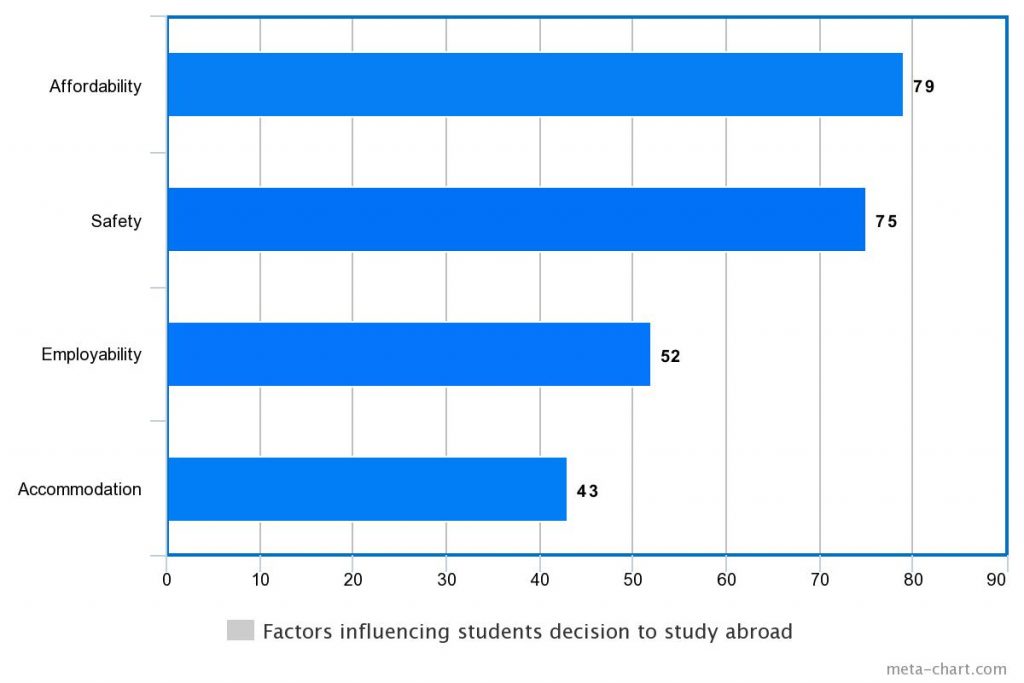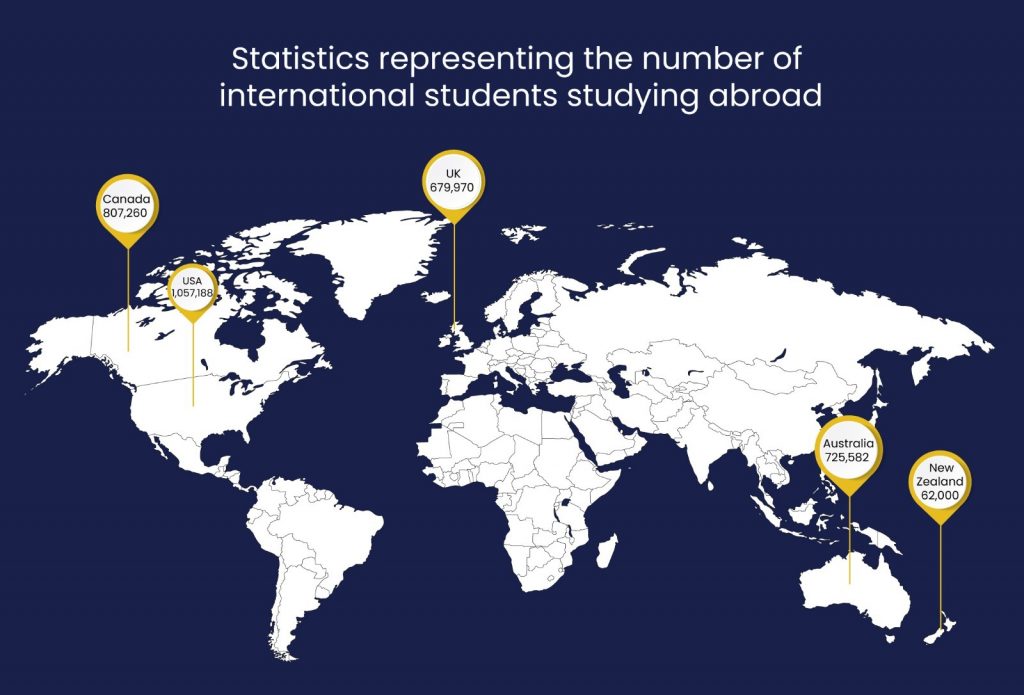Key insights at a glance:
- In 2022, an estimated 6.4 million students opted for international studies, marking a fourfold increase compared to 2000.
- Safety, affordability, employability, and housing stand out as the main influencers in the decision-making process for students.
- Canada, the UK, the US, Australia, and New Zealand are the leading countries experiencing rapid growth in their international student populations.
On International Students Day, it’s paramount to recognize the escalating trend in the global movement of international students, reflecting the profound desire for diverse educational experiences worldwide. Comprehensive statistics, as analyzed by the Infinite University Centre, illuminate the emergence of study abroad destinations that are fiercely competing for attention among students, underscoring the significance of international education on this occasion.
According to research, there are four key factors that have a significant impact on students’ plans to study abroad. Foremost among these are considerations related to accommodation, affordability, safety, and employability.
In contrast to the year 2000, when 1.6 million students pursued higher education abroad, the landscape has undergone a significant transformation. The number of students opting to study overseas has quadrupled, reaching a substantial 6.4 million in 2022.
Primary factors influencing students’ decisions to study abroad:

There are certain factors that students consider when making a decision to study abroad. The primary factors that influence students decisions to study abroad are highlighted below:
Affordability:
The majority of students considering studying abroad prioritize affordability, factoring in elements like tuition fees, cost of living, and associated expenses. Notably, 79% of students express concerns specifically about managing tuition fees and living expenses.
Safety:
A considerable proportion of students expressed substantial concerns regarding safety while studying abroad. On average, 75% of students expressed worries about their safety. The predominant concern surrounding safety revolves around the issue of discrimination, which emerged as the top apprehension among students.
Employability:
The study reveals a pragmatic approach among students considering studying abroad. Career aspirations and employability emerge as the primary motivations for 52% of students, closely followed by a desire for personal development (46%), and access to higher-quality teaching (35%). Interestingly, the pursuit of adventure ranks as a motivation for a modest 6% of students.
Accommodation:
The quest for suitable accommodation has become notably challenging in recent times, exerting a substantial influence on an individual’s decision-making process when considering studying abroad. Approximately 43% of students identify this as a significant concern during their planning phase for studying abroad.
Popular study abroad destinations:

Canada:
In 2022, Canada embraced a total of 807,260 international students, with 226,450 originating from India. This marked a substantial increase of 684,595 international students studying in Canada compared to figures from 2000.
UK:
In UK higher education institutions, there’s a substantial international student presence, with 679,970 students enrolled, including 126,535 from India alone. In 2019, over 30,000 Indian students chose the UK for their studies. Notably, recent years, specifically 2021–2022, have witnessed a remarkable surge in this trend.
Australia:
During the January–August 2023 period, Australia hosted 725,582 international students, with India contributing significantly, representing 17% of this total with 120,277 students pursuing higher education there. This marks a substantial increase from 2002, when India’s share in sending students abroad to study in Australia was only 4%.
US:
Throughout the academic year 2022–23, the country hosted a total of 1,057,188 international students. Notably, India contributed significantly, sending 268,923 students to the US in 2022–23, marking a remarkable 35% increase from the 199,182 students recorded in the academic year 2021–22.
New Zealand:
By June 2023, approximately 62,000 student visas had been approved, signifying a continued effort to restore the influx of international students after COVID. In comparison, during the academic year 2019–2020, the total number of approved student visas stood at 83,733.
On this International Students Day, the Infinite University Centre delved deep into research, revealing a growing trend of students seeking opportunities beyond their borders. Through comprehensive analysis, the reports highlighted the intricate factors influencing students’ decisions to study abroad and identified the preferred destinations for international education.

